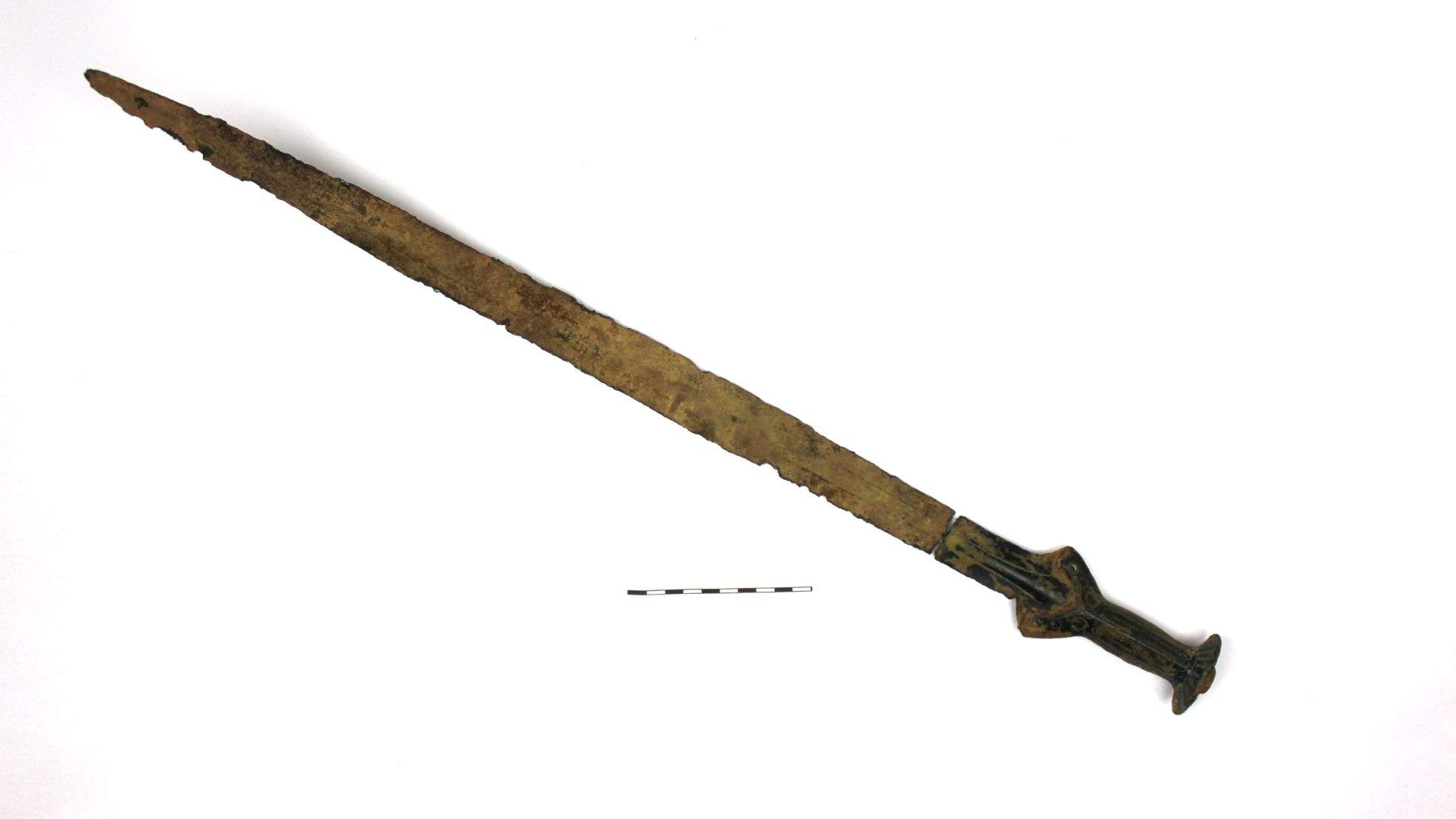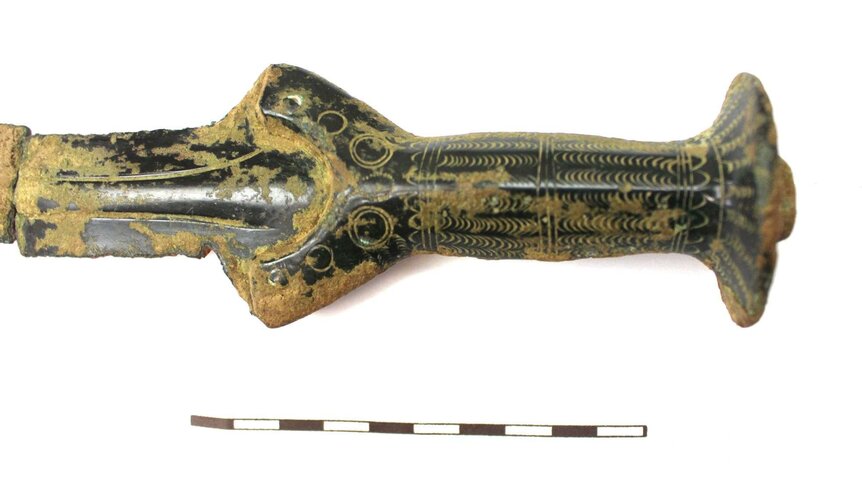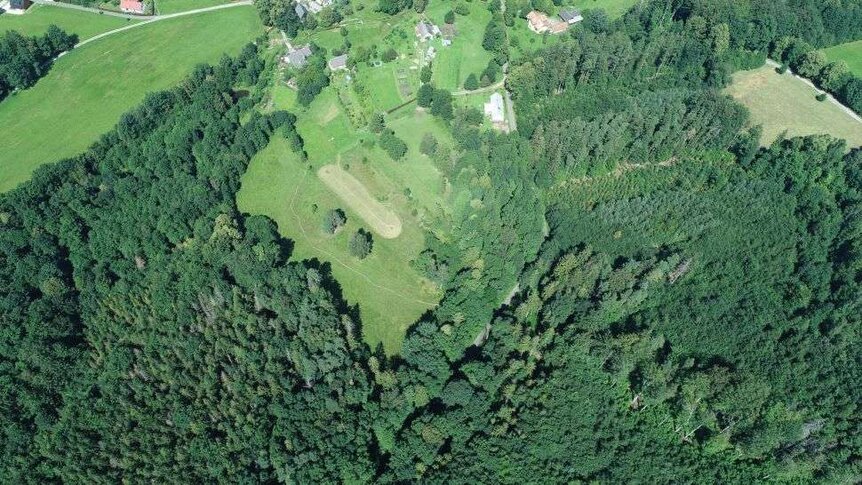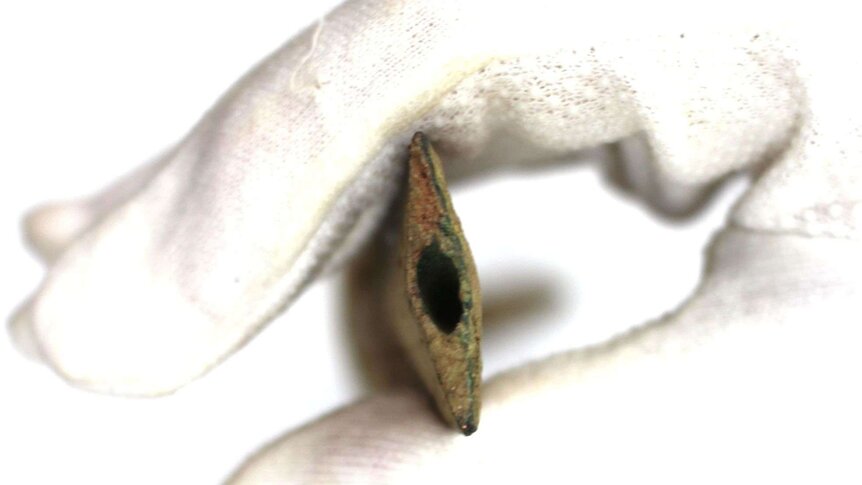Create a free profile to get unlimited access to exclusive videos, sweepstakes, and more!
Czech mushroom hunter stumbles across rare 3,300-year-old Bronze Age sword

The wonders of the past are sometimes just under our feet as one fortunate mushroom forager in the Czech Republic recently found out while out gathering some of Mother Nature's edible bounty.
According to news first revealed by Radio Prague International (RPI), Roman Novák was on a mushrooming expedition this past spring on a green, forested hillside near his house in the eastern Jesenicko region of the Czech Republic after a soaking shower drenched the forest. During his hunt, Novák made the remarkable discovery of an ancient sword and bronze axe which have been tested and date back to the Bronze Age 3,300 years ago.
In rural regions of the Eastern European country, mushroom picking is an enjoyable way to spend an afternoon, especially after a fresh rain that causes the heads of the plant to swell with moisture and making them more apparent to the trained eye.
"I saw a piece of metal sticking out of some stones," Novák told RPI. "I kicked it and found that it was a blade, part of a sword. I then dug some more to find a bronze axe."
Realizing he might have unearthed a rare historic treasure, Novák immediately reported his findings to archaeologists stationed at the Silesian Museum in the nearby town of Opava, and an official excavation of the entire site is now underway by a trained museum research team.
This impressive sword's octagonal grip and pommel are highly decorated with intricate, engraved circles and rows of crescent-shaped marks. Its steel blade was uncovered broken near the hilt, but the rest of the artifact seems complete.
Both sword and axe date back approximately to 1,300 BC and are similar to weapons used primarily in the area of what is known today as Northern Germany, as explained by Dr. Jiří Juchelka, who runs the archaeology department at the Silesian Museum.
"At the moment, we are thoroughly traversing the site and looking for other possible finds," Dr. Juchelka told Live Science. "The site was well away from contemporary towns and known prehistoric settlements in an archaeologically marginal area where no other finds had been reported."
Juchelka and his museum colleagues have recently finished a series of careful analyses and investigations of the antiquities, tests which included studying their chemical composition and X-rays to lift the veil of the internal structures.
Their conclusions are that the eye-catching sword was cast during the Bronze Age in northern Europe, and bears a resemblance to "Vasby" swords, classified as such after a Swedish location where another ceremonial sword of this sort was discovered.
It would have been a pricey weapon for folks of the time period, made during a point in time when the region's Urnfield culture was just rising in importance in central Europe. The bronze axe appears to have been made locally and heralds from the same time period.
“They were obviously trying their best, but the quality of the casting was actually pretty low," Juchelka added. "X-ray tests show that there are many small bubbles inside the weapon. This suggests that the sword was not used in combat, but was instead of symbolic value. The finds may be related to a religious theme, or they may be part of a bronze treasure. It is not easy to say, based on what we know."






























